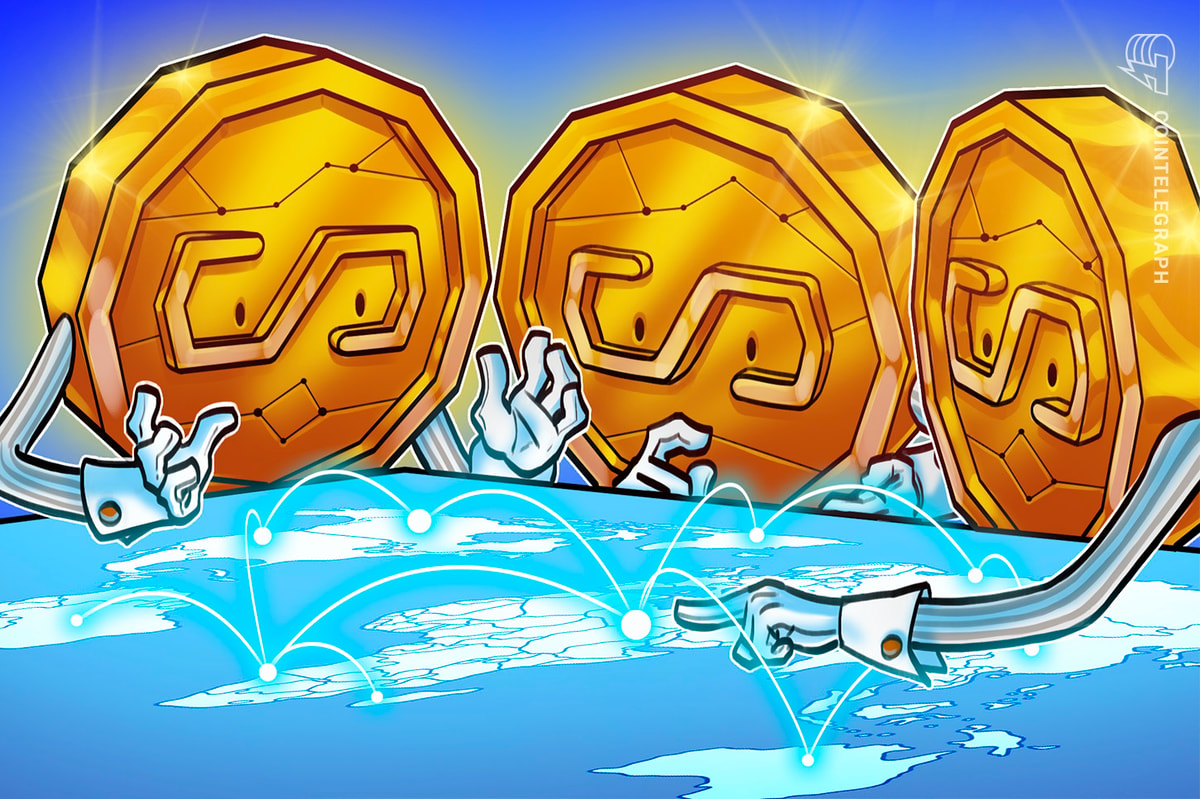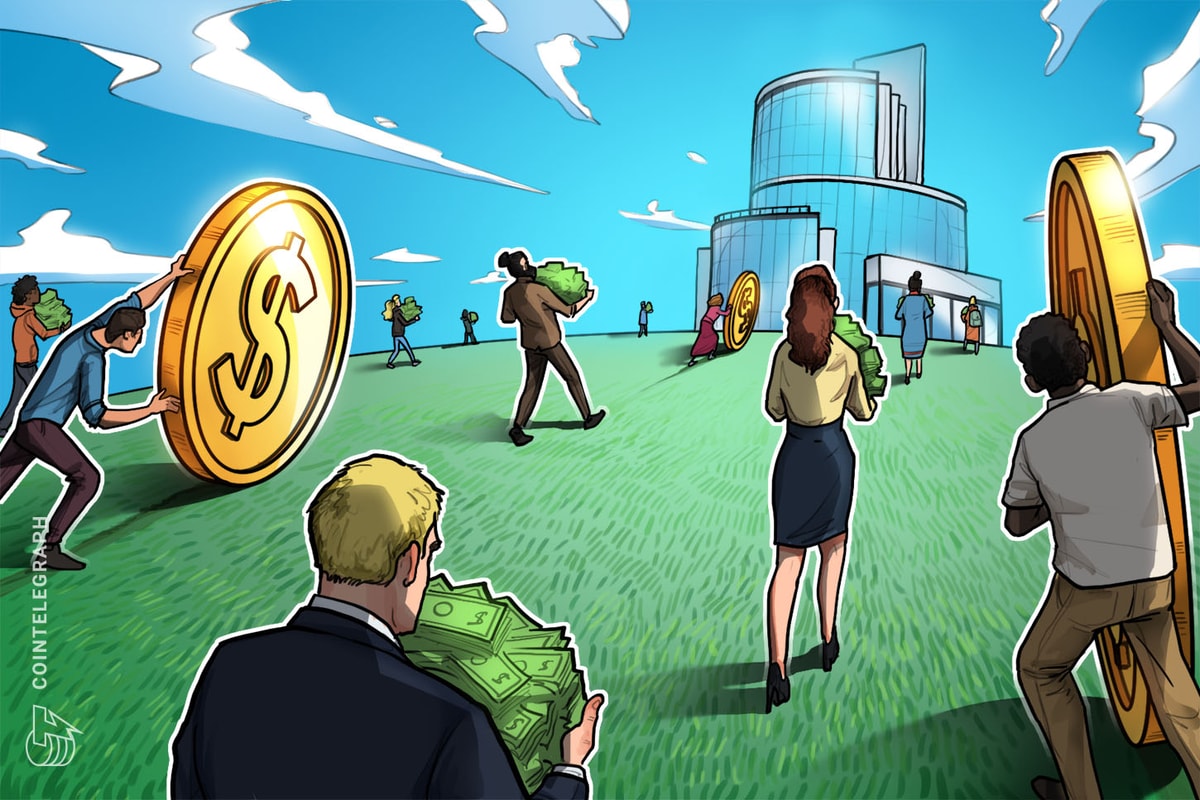You may think that you have never heard of Laszlo Hanyecz, a Florida-based programmer working for online retail company GoRuck, but you’d probably be wrong — Hanyecz was behind the inspirational purchase of two pizzas from Papa John’s for 10,000 Bitcoin (BTC) back on May 22, 2010, making this week a celebration of Pizza Day’s eight year anniversary.
But the transaction did not involve only one person: Jeremy Sturdivant, also known as Jercos, participated in the original Bitcoin pizza deal as the recipient of those 10,000 BTC that he turned into two pizzas.
Ever since the fateful first-ever recorded transaction of Bitcoin for a physical good, the use case for the currency has taken off, with customers now able to use Bitcoin for real estate deals, online shopping, airplane bookings and, of course, pizza.
Cointelegraph got the chance to speak to both Laszlo and Jeremy this week about their views on Bitcoin, how they feel about the legacy of the “Bitcoin Pizza” and their favorite type of pizza.
Cointelegraph: You probably get asked this question a lot, but I have to ask. Since 10,000 Bitcoin is worth around 80 million dollars today, do you ever regret paying 10,000 BTC for two pizzas?
LH: You know, I don't regret it. I think that it's great that I got to be part of the early history of Bitcoin in that way, and people know about the pizza and it's an interesting story because everybody can kind of relate to that and be [like] - "Oh my God, you spent all of that money!" I was also kind of giving people tech support on the forums and I ported Bitcoin to MacOS, and you know, some other things - fix bugs and whatnot, and I've always kind of just wanted people to use Bitcoin and buying the pizza was one way to do that. I didn't think it would get as popular as it has, but it's gotten to be a really catchy story for people.
CT: So do you use Bitcoin in everyday life?
LH: Yeah, I do, I try to whenever I can. I've bought many things over the years with it, I play around with the Bitcoin software and things like that, but I try to kind of keep it as a hobby.
But I haven't really used Bitcoin much in face-to-face payments. I've done it mostly online. It’s one of those things where I like to keep an eye on it and I like to participate in online, but as far as face-to-face stuff, I just feel like it's not really the best. It tends to be more frustrating, and the goal is that Bitcoin should become better than the status quo, right?
CT: What’s your favorite cryptocurrency?
LH: Bitcoin! [Laughs]
CT: What's your favorite pizza?
LH: Pizza? I like Supreme.
CT: In your original post from the first Pizza Day, you compared your desire to buy a pizza with buying a hotel breakfast platter. What is your ideal hotel breakfast platter?
LH: Oh, I don't know. I like eggs, bacon, pancakes - you know, standard stuff.
Just to expand on that - the reason that I compared it that way - I was thinking of the experience of me picking up the phone and saying "Hey, I'd like breakfast in room 123", and I just get charged on my account and I get the food delivered to me - I don't care how they did it. Whether it's a contractor, or Papa John's, or whoever brings it. What I was trying to do was make it clear that I didn't want somebody to send me a Papa John's gift card, or a Domino's credit or anything like that - I wanted food and I wanted to pay Bitcoins for food. Because if I can buy food with it, then it's it's as real as any other money, right? Food is a basic necessity -- if I can eat from Bitcoin, I can live off of Bitcoin.
CT: Does your current job involve working with cryptocurrency?
LH: I don't really like engaging in it as a primary business, it's sort of a side project for me. I know that's kind of weird to explain to people, but I feel like that keeps it more fun for me - than if it was like a nine-to-five kind of thing of "Oh, you know, let's do some crypto business." I don't want to be one of those guys with like a scam ICO or something like that.
Just recently at my job, I kind of convinced people here to accept Bitcoin, and, being a developer, I integrated it on our website. We are trying to see how that goes now. People here are excited about it, they're excited about about what I'd done and everything. And so we're trying it out. I'm kind of applying my hobby at work now, so that's pretty cool when you can do that.
CT: Have you ever thought about buying a pizza with any other cryptocurrencies besides Bitcoin?
LH: I like Bitcoin. I was around early, when it was just Bitcoin, and to me, the copycat coins or whatever you want to call them - you know 90% of these things are simply a copy-paste of Bitcoin, and they changed the logo, or they changed something. I'm not that interested in those, I am interested in Bitcoin.
CT: Do you think that your original Bitcoin pizza purchase directly influenced the fact that you can now buy pizza and other food with Bitcoin?
LH: I'd like to think that what I did helped. But I think if it wasn't me, somebody else would have come along. And maybe it wouldn't have been pizza. But I think Bitcoin was kind of destined to get big, and I didn't know everything about Bitcoin back then - I mean, I had only been playing with it a couple months, and I figured out how to mine, I actually wrote the first GPU miner - and that's how I got all those Bitcoins that I was kind of giving away.
CT: Do you think it makes sense for people to use Bitcoin for kind of pizza-type purchases now?
LH: If everybody wanted to pay for pizza with Bitcoin right now – it wouldn't work -- they would try it, they'd realize that their transactions aren't confirming, and they'd lose interest. And that's kind of where we're at today, right?
In December, everybody was like "Bitcoin, Bitcoin, Bitcoin," and then "Oh my god, my transaction has been sitting there for 12 hours, what's going on, this thing sucks!" People learned how it works and we actually saw the fee market working and all that, so I think it's really exciting, but I have no idea on how it's gonna go, I think it's really interesting to watch.
CT: What would it take for Bitcoin to become more widely used?
LH: I know you guys covered it when I did the Lightning pizza thing. I feel like when something like that – the Lightning Network or something similar to it – ends up becoming mainstream, usable for people. I think that's where it'll become more interesting to actually spend bitcoins face-to-face.
CT: How do you think the Lightning Network will make Bitcoin more mainstream?
LH: The Lighting Network is not perfect either, it has issues, it can be in abused in various ways, but it's a step in that direction, and to me, if something like Lightning Network takes off, I think you're gonna see every online retailer just switch to it because nobody wants to use MasterCard, and Visa, and PayPal.
I think the Lightning Network is definitely the goal there, to bring more usability to people, because it really does enable instant payments, and Bitcoin payments are not instant. If you're accepting with zero confirmation of payment, you're not really doing it correctly. And that's okay to do if you're gonna extend trust to people – because same thing happens with a credit card – all you have is the promise today, you haven't actually gotten paid. So in some businesses that's perfectly fine, but that's not really the spirit of Bitcoin, you shouldn't have to trust anybody, you should be able to say "Hey, I have this Bitcoin, and here's the cryptographic proof." The Lightning Network can also give us back some of the privacy that people originally mistakenly thought they had.
CT: In the photo of your family eating the “Lightning Network Pizza”, your children are wearing “I <3 Bitcoin” t-shirts. Do you educate your children about Bitcoin?

Image source: Laszlo Hanyecz’s Feb. 25 post on Lightning-dev mailing list
LH: Liam is my son, he's seven and Amy, my daughter, is nine. They actually have their own paper wallets, they own like a thousandth of a Bitcoin or something like that. I showed them how to go on GDAX and things like that. I just made them a bookmark on their computer so that they could check the price. I showed them how to multiply their little thousandth of a Bitcoin by the price and things like that.
I spent time explaining it to them, they were like:
- Daddy, what are you doing?
- Bitcoin.
- Oh, what's the Bitcoin?
My kids are fairly young, I can't really explain market forces and things like that to them yet, but they understand that more is good, and Bitcoin is good, and that I'm involved with Bitcoin somehow. I try to get them to learn, and I think when they get older, I'll try to teach them more technical stuff.
Jercos – the man who earned 10,000 BTC by selling two pizzas
Cointelegraph also had the chance to speak with Jeremy Sturdivant, also known as Jercos, who participated in the original Bitcoin pizza deal as the recipient of those 10,000 BTC that he turned into two pizzas. Sturdivant, who told CT that he turned Hanyecz’s BTC into fiat for a trip when they were worth a couple of hundred dollars, noted that he still uses Bitcoin in his everyday life “to some extent:”
“Doing independent contract work brings money in a variety of forms, and I've been paid in Bitcoin, Litecoin, even Dogecoin. My local grocery stores don't take it though, so I most often find myself trading it away to put it to use, aside from online services [...] Steam, Humble store, and other video game retailers accepted Bitcoin during a lot of the times I had free time for video games. Certainly the bulk of my Steam library was paid for with Bitcoin.”
When asked about the most amount of Bitcoin he has ever had, Sturdivant estimated it to be close to 40,000 due to both mining and trading early on:
“I've never seen Bitcoin as an investment, and while it's easy to look back and say ‘I could have been a millionaire,’ I think it's more important to look at the mindset I had during the pizza transaction, not being that of acquiring an investment, but of making use of a form of currency. If I was looking to hoard coins, I very likely wouldn't have been in the right place at the right time.”
Sturdivant also noted that he’s also continued to buy and sell pizza in cryptocurrency using Bitcoin, Litecoin (LTC), and Ethereum (ETH), and that he prefers pizza with meat and red onions, although “for a little controversy, I like ‘Hawaiian’ pizza quite a lot.”










